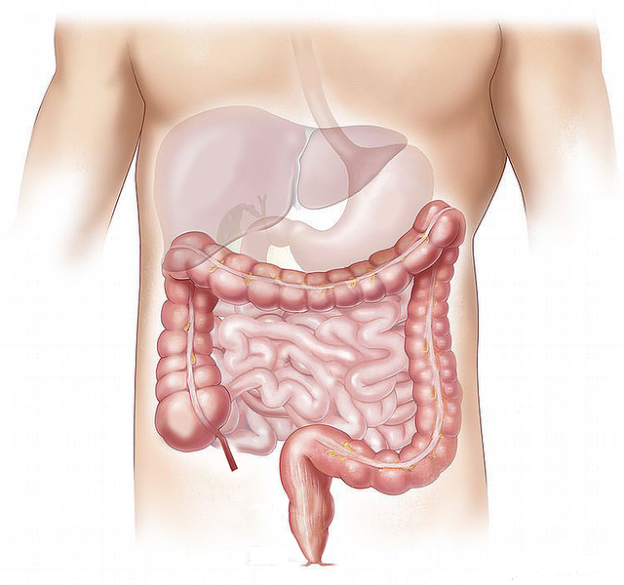- Mon - Sat 9:00am - 9:00pm
- Sun 9:00am - 2:00pm
- No 218, South Service Road, Phase1,
- Sathuvachari, Vallalar, Vellore - 632009
- Landmark: Near Vallalar Bus Stop
Paediatric Gastroenterology
Appendicitis
Appendicitis is an inflammation of the appendix. It's a medical emergency that almost always requires surgery as soon as possible to remove the appendix. Luckily, you can live just fine without it. Appendicitis happens when the appendix gets blocked, often by poop, a foreign body (something inside you that isn’t supposed to be there), or cancer. Blockage may also result from infection, since the appendix can swell in response to any infection in the body. Appendicitis means inflammation of the appendix. It is thought that appendicitis begins when the opening from the appendix into the cecum becomes blocked. The blockage may be due to a build-up of thick mucus within the appendix or to stool that enters the appendix from the cecum. The mucus or stool hardens, becomes rock-like, and blocks the opening.

Intussusception
Intussusception is a serious condition in which part of the intestine slides into an adjacent part of the intestine. This "telescoping" often blocks food or fluid from passing through. Intussusception also cuts off the blood supply to the part of the intestine that's affected, which can lead to a tear in the bowel (perforation), infection and death of bowel tissue. Intussusception is the most common cause of intestinal obstruction in children younger than 3. The cause of most cases of intussusception in children is unknown. Though rare in adults, most cases of adult intussusception are the result of an underlying medical condition, such as a tumor. In children, the intestines can usually be pushed back into position with an X-ray procedure. In adults, surgery is often required to correct the problem.
Malrotation
Malrotation is an abnormality in which the intestine does not form in the correct way in the abdomen. It occurs early in the pregnancy (around the 10th week) and develops when the intestine fails to coil into the proper position in the abdomen. Malrotation is often not evident until the baby experiences a twisting of the intestine known as a volvulus. A volvulus is a disorder that causes an obstruction in the intestine, preventing food from being digested normally. The blood supply to the twisted part of the intestine can also be cut off, leading to the death of that segment of the intestine. This situation can become fatal if not treated as soon as possible.
Intestinal malrotation, also known as intestinal nonrotation or incomplete rotation, refers to any variation in this rotation and fixation of the GI tract during development. Interruption of typical intestinal rotation and fixation during fetal development can occur at a wide range of locations; this leads to various acute and chronic presentations of disease

IHPS (Pyloric Stenosis)
Infantile hypertrophic pyloric stenosis (IHPS) describes a disorder in infancy characterised by hyperplasia of smooth muscle fibres of the pylorus leading to narrowing of the pyloric canal and gastric outlet obstruction. The incidence of IHPS varies amongst different ethnic groups and races around the world. IHPS occurs in about 1–4 per 1000 live births and it is more common among male infants with a male to female sex ratio estimated at 4–6:1 and more frequent in preterm than term neonates. Male gender predominance and a family history of IHPS are consistently reported risk factors and suggest a genetic component to the aetiology.

Gall Stones
Gallstones are hardened deposits of digestive fluid that can form in your gallbladder. Your gallbladder is a small, pear-shaped organ on the right side of your abdomen, just beneath your liver. The gallbladder holds a digestive fluid called bile that's released into your small intestine.Gallstones range in size from as small as a grain of sand to as large as a golf ball. Some people develop just one gallstone, while others develop many gallstones at the same time. People who experience symptoms from their gallstones usually require gallbladder removal surgery. Gallstones that don't cause any signs and symptoms typically don't need treatment.

Choledochal Cyst
Most patients have symptoms in the first year of life. It is rare for symptoms to be undetected until adulthood, and usually adults have associated complications. The classic triad of intermittent abdominal pain, jaundice, and a right upper quadrant abdominal mass is found only in minority of patients. In infants, choledochal cysts usually lead to obstruction of the bile ducts and retention of bile. This leads to jaundice and an enlarged liver. If the obstruction is not relieved, permanent damage may occur to the liver - scarring and cirrhosis - with the signs of portal hypertension (obstruction to the flow of blood through the liver).

Biliary Atresia
Biliary atresia is a rare disease of the liver and bile ducts that occurs in infants. Symptoms of the disease appear or develop about two to eight weeks after birth. Cells within the liver produce liquid called bile. Bile helps to digest fat. It also arries waste products from the liver to the intestines for excretion. This network of channels and ducts is called the biliary system. When the biliary system is working the way it should, it lets the bile drain from the liver into the intestines. Biliary atresia is a rare liver disease that occurs in infants. It is often found shortly after birth. The disorder affects tubes in the liver called bile ducts. If not treated with surgery, it can be fatal. Bile is a fluid made by the liver. Normally the bile ducts take bile to the small intestine. Bile helps with digestion and also carries waste products. When a child has biliary atresia, the bile ducts in the liver are blocked. Bile becomes backed up in the liver. This damages the liver. Many vital body functions also are affected.

